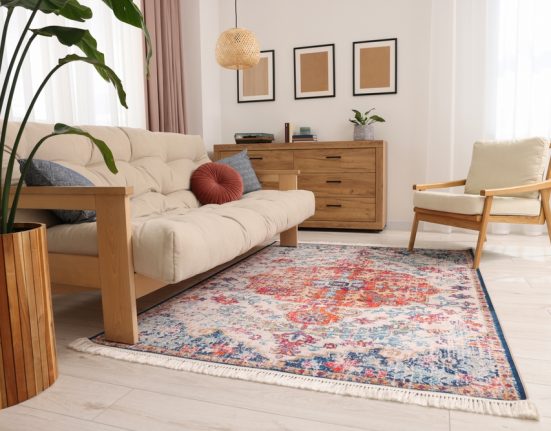One needs to have a personal space for themselves for that ME time but if you continue to use the same for work it may not be relaxing anymore. Here are interior design ideas by home decor experts to reduce stress and anxiety.
Creating a healthy, relaxing place in your home to reduce anxiety is not difficult peaceful and relaxation spaces can be created in your available in space but everyone’s home is different and therefore have their own needs. One needs to have a personal space for themselves for that ME time but if you continue to use the same for work it may not be relaxing anymore.
Charu Gupta, Interior Designer and Director of L’ Institute De Dessins (LIDD), shared, “Just like with any habit, cultivating an anxiety-reducing space at home requires practice. You need to use the space regularly in a manner that allows you to feel more relaxed and rejuvenated. In order to reduce anxiety, you need to create a quiet refuge which will make your built environment a haven of relaxation”.
1. Plants: Indoor plants besides adding greenery and filling empty spaces, reduces stress and anxiety as it connects you with nature. They create a calm and nurturing environment. They absorb carbon dioxide and release oxygen indoors. Looking at greenery around you boosts up the mood. In addition, one can add a water body for that smoothing sound of water. In case you cannot have plants indoors for some reason, add a scenic wallpaper or paintings.
2. De-clutter: That’s one of the biggest reasons for anxiety seeing clutter in your abode. One doesn’t want to be claustrophobic and stressed. An open space looks welcoming. Declutter what you don’t need or use. You can either store or give away in charity. Decorate your home with things you like or cherish , they will remind you of the happy moments and reduce anxiety.
3. Colours: Colour has a powerful psychological effect, as they evoke emotions and stimulate feelings or memories. Choose colors wisely and too bright colors bring forth anger and aggression and too dull colors are depressing.
4. Bathroom: Whites and warm colors because they connote cleanliness and purity. Blues and greens and turquoises give a sense of being clean and fresh — and calm.
5. Bedroom: Cool colours — blues, greens and lavenders — can be great choices here, because they are thought to have a calming effect.
6. Dining room: Red decor can be great for a formal dining room. In addition to encouraging conversation, it whets the appetites of your guests.
7. Home office: Green is the color of concentration. It’s one of the best colors to be surrounded by for long periods of time.
8. Kitchen: yellows can be great colors as they stimulate appetite.
9. Living room and foyer: Warm tones like reds, yellows, and oranges, and earth tones like brown and beige often work well both in the living room and foyer, as they stimulate conversation.
10. Lighting: Light has impacts both physical and mental. Lighting provides energy, it signals mood and expectations when we enter a room. The lighting should be just appropriate. Bright tends to create aggression and also heat in the room. Turning down light keeps one calm and is relaxing. Best is natural light which is there only in day time.
11. Materials: Woods, stone, natural fibres enliven the senses. Selecting materials and keeping them in their pure state, like concrete being concrete color or wood species remaining in their natural color state, can provide familiarity and comfort. Natural upholstery and rugs such as natural seagrass matting introduce warmth and tactility to a room.
12. Paintings: Surrounding yourself with photos or pieces of art that make you happy can instantly change your mood. Pictures of landscapes, or loved ones, that bring forth happy memories, can brighten up your day immensely. These help you cleanse your mind, creating more of a positive mindset to counteract those moments of anxiety.
13. Mirrors: Mirrors are famous for creating the illusion of expanse. It widens a narrow space and makes it feel airier. But on the other hand, you would want to place your mirrors carefully too. Too reflective surfaces in one space can induce stress regarding your appearance.
14. Sleep: Uncomfortable beds are stress-inducing and can reduce the amount of deep sleep we get each night. Ensure your mattress is comfortable and one should ideally replace it every 5-6 years.
15. Acoustic: Ensure that acoustics are good and no echo is there, as this is another stress builder. Listening to your favourite music is a great stress buster.
16. Technology Free: Keep gadgets away as much as you can. As you will be restless and tend to check them time to time. Give yourself a break from them for to relax yourself after a hard day at work. Rest your mind and relieve yourself from the stresses of the day.
17. Pets: They are great stress busters; they only want love and are not demanding at all. They will be waiting for you at the door when you get back from work to welcome you.
18. Aroma and Candles: Light candles and have your favourite aroma oils burning in diffusers for that calming effect.
Sapna Aggarwal, Creative Director at ANSA Architecture and Interiors in Delhi-NCR asserted that creating a peaceful and stress-free living room can have a big impact on your overall well-being. She added to the list of tips for turning your living room into a calming oasis –
1. Choose the right colours: Stick to neutral colors like white, beige, and gray for your walls, as they help create a peaceful atmosphere. You can add pops of color with accents like throw pillows, rugs, and curtains.
2. Add plants: Plants bring life to a room and can help purify the air. They can also serve as natural stress-relievers, so consider adding a few low-maintenance options like succulents, ferns, or bamboo.
3. Use natural light: Natural light can help boost your mood, so make sure your living room has plenty of windows to let the sun in. If necessary, use sheer curtains to filter out harsh light and provide privacy.
4. Incorporate comfortable seating: Invest in comfortable seating like a cozy sofa and plush chairs to encourage relaxation. Make sure there is enough seating for everyone who uses the room and consider using a chaise lounge or rocking chair for extra comfort.
5. De-clutter: A cluttered room can be distracting and stressful, so keep your living room tidy by storing items out of sight. Use baskets or bins to store magazines, books, and other items that don’t need to be on display.
6. Add soft lighting: Soft lighting helps create a cozy atmosphere and can reduce eye strain. Consider using a combination of table lamps, floor lamps, and wall sconces to create a warm and inviting glow.
7. Create zones: Divide your living room into different zones to make it more functional. For example, you could have a seating area for relaxing, a reading nook, and a space for yoga or meditation.
8. Add personal touches: Personalize your living room by adding photos, art, and other items that bring you joy. These items will help create a warm and inviting atmosphere that is uniquely your own.
By following these tips, you can create a peaceful and stress-free living room that will help you relax and recharge. Whether you’re reading, meditating or simply lounging on the sofa, your home should be a place of calm and comfort.







